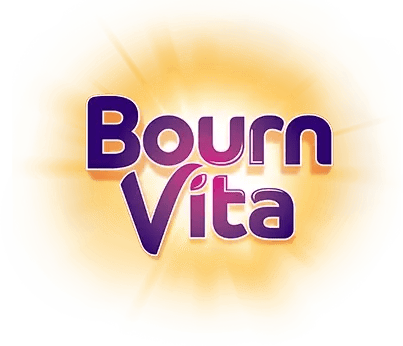- Whole Grains for Lasting Energy
- Protein Sources for Growth and Repair
- Fruits for Natural Vitamins
- Vegetables for Fiber and Minerals
- Dairy or Alternatives for Bone Strength
- Healthy Fats for Brain Development
- Hydration for Balance and Digestion
Introduction

A food chart is like a simple guide that helps parents plan meals for kids without the confusion. Kids need the right mix of nutrients for growth, energy, learning, and immunity, and a visual roadmap makes it easier to see what should go on the plate every day. Instead of guessing portions or food types, a chart clearly shows how grains, proteins, fruits, vegetables, and dairy can be combined to make wholesome meals.
Childhood is the stage where eating habits are formed and the foundation laid now will last a lifetime. A well-planned chart ensures kids don’t just eat to fill their tummies but also get the vitamins, minerals, and proteins for healthy bones, sharp minds, and strong immunity. It helps parents have variety while avoiding overfeeding and nutritional gaps. For example, adding a serving of whole grains for energy, a colorful mix of vegetables for vitamins, a portion of protein for strength, and fruits for natural sweetness makes a balance for a child.
The real strength of a healthy food chart lies in its simplicity. It helps busy families make quick and thoughtful decisions without relying on packaged foods. With small tweaks, the same chart can be used for toddlers, school-going kids, and even teenagers. This makes it a practical tool for daily routines and long-term health, turning mealtime into a foundation for growth and well-being.
Making Plates Balanced and Colorful: 7 Essentials of a Healthy Food Chart for Kids

Feeding children is about ensuring they receive the right blend of nutrients at the right time. A healthy food chart becomes a simple tool for parents, showing how to bring balance, variety, and nutrition to the plate every day. With clear divisions of food groups, it removes the guesswork and ensures meals are both nourishing and enjoyable.
The idea is to help children grow stronger, stay energetic through the day, and build immunity while also developing lifelong eating habits. A food chart designed for kids guides portion sizes and food types, making it easier to include everything from grains to proteins and fruits to healthy fats in the right proportion. Here are seven essential components every parent should keep in mind while planning a child’s food chart.
Whole Grains for Lasting Energy
According to a study published in Front Nutr. 2024, foods like whole wheat, brown rice, oats, and millets are rich in complex carbohydrates and fiber. They release energy slowly, keeping kids active without sudden hunger pangs. Switching from refined grains to whole grains also supports better digestion and long-term health.
Protein Sources for Growth and Repair
According ot the Dietary Guidelines for Indians, eggs, pulses, paneer, fish, and nuts provide the proteins needed for building muscles, repairing tissues, and supporting brain development. Including one protein source in every meal ensures children get the strength they need for growth and daily activities.
Fruits for Natural Vitamins
As per a study published in Adv Nutr. 2012, bananas, papayas, guavas, and apples provided vitamins, minerals, and antioxidants that support immunity and improve digestion. Offering seasonal fruits not only brings variety but also ensures maximum freshness and nutritional value.
Vegetables for Fiber and Minerals
According to WHO, carrots, beans, spinach, and peas provide iron, calcium, and vitamins that protect against deficiencies. A mix of colorful vegetables makes the plate visually appealing while ensuring kids receive a wide range of nutrients.
Dairy or Alternatives for Bone Strength
According to FSSAI, milk, curd, paneer, and cheese, or alternatives like ragi and sesame seeds, provide calcium and vitamin D. These nutrients support strong bones, healthy teeth, and proper growth. Adding a glass of milk or a serving of curd daily completes the food chart.
Healthy Fats for Brain Development
As per the research done by FSSAI, foods like nuts, seeds, avocados, and oils such as mustard or groundnut provide healthy fats that improve memory and support hormone balance. Even a small portion of ghee or nut butter in meals adds flavor and essential nutrition.
Hydration for Balance and Digestion
According to the Dietary Guidelines for Indians, plain water, buttermilk, coconut water, and fresh soups ensure proper hydration and help absorb nutrients effectively. Encouraging kids to drink water regularly prevents fatigue and keeps their digestion smooth.
Conclusion

A healthy food chart does more than list foods; it gives parents a roadmap for building balance into everyday meals. By including grains, proteins, fruits, vegetables, dairy or alternatives, healthy fats, and proper hydration, every plate becomes a source of energy, strength, and protection. With such a chart, mealtime becomes less about worry and more about confidence, ensuring children grow up with habits that keep them healthy for life.
Her love for storytelling began with reading her grandfather’s speeches, where Tarishi saw the power of words in creating lasting memories. Combining her passions for food and writing, she has turned her life into a fulfilling path of sharing stories that celebrate flavours and how food brings communities together.
The views expressed are that of the expert alone.
The information provided in this content is for informational purposes only and should not be considered a substitute for professional medical advice, diagnosis, or treatment. Always seek the advice of your physician or another qualified healthcare provider before making any significant changes to your diet, exercise, or medication routines.
References
https://www.nin.res.in/downloads/DietaryGuidelinesforNINwebsite.pdf
https://fssai.gov.in/upload/knowledge_hub/852185f89a7fc009c5Book_Do_You_Eat_Right_16_10_2020.pdf
https://iris.who.int/bitstream/handle/10665/42716/9241546123.pdf
https://pmc.ncbi.nlm.nih.gov/articles/PMC3649719/
https://www.nin.res.in/dietaryguidelines/pdfjs/locale/DGI24thJune2024fin.pdf
















